1818 Lima Cuartilla - "Platero"/Silversmith Issue?
 threefifty
Posts: 141 ✭✭✭
threefifty
Posts: 141 ✭✭✭
I saw a weird cuartilla on Ebay from a seller in South America a while back described as a "platero" (silversmith) issue. Thought it was interesting but couldn't find much on it. I just saw another 1818 of the same type. Looking through the auction records this type seems to be sold as genuine alongside the normal type. It is clearly a different castle punch, doesn't seem like it is used in 1819. What do you all think, is it a private issue as that seller says? Seems relatively high quality for a counterfeit. Does anyone have Emilio Ortiz's book to check?
Thank you!
"Platero" type?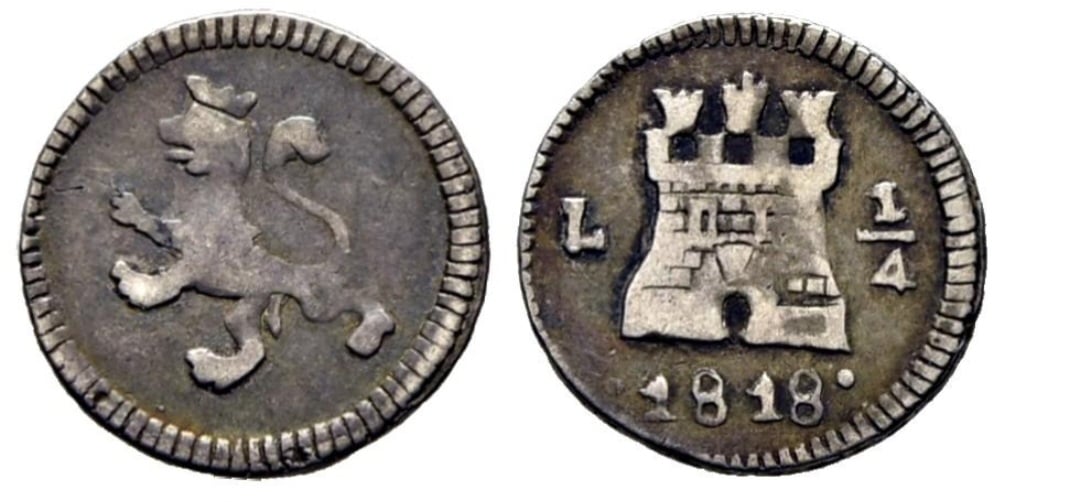
Normal: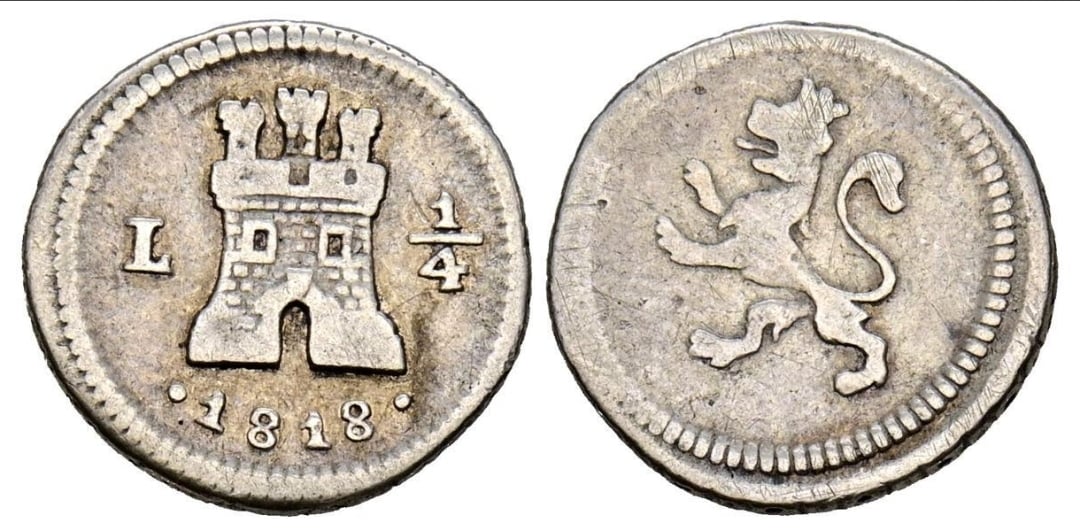
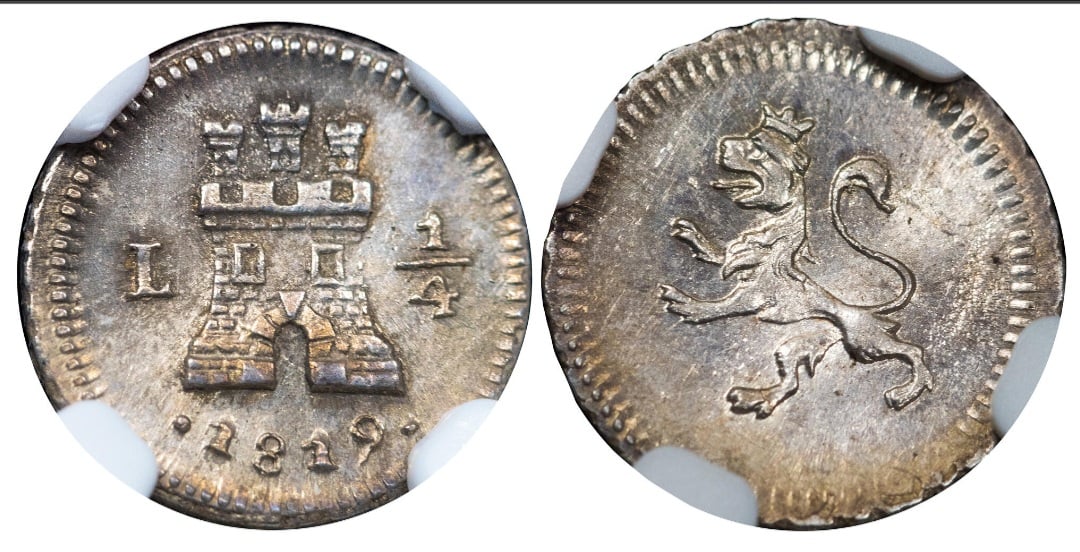
2
Comments
Ah, yes, the well endowed lion variety. I'd guess it's made with a counterfeit die. When and who did the counterfeiting - that will require quite a bit of research.
Lol. Thanks TwoKopeiki. At least the die work is better than my type coin in my counterfeit denomination set... (pictured below).
@genosse , curious to hear your thoughts on the topic.
Thank you for inviting me to the discussion.
I don't have such counterfeit 1/4 real coins in my collection.
But I sometimes see them for sale (as you've accurately noted - without mentioning that they are counterfeits)
I've never read about silversmiths' issues.
But I admit the version that silversmiths could participate in the production of counterfeits.
Moreover, if these were copper coins of small denominations, such products could be called tokens.
However, I think that counterfeit silver coins of small denominations would be considered counterfeits from a legal point of view and punishable by law.
Fac quod debes, fiat quod fiet
Fancy way of saying contemporary counterfeit... A number exist for Lima colonial cuartillos. That 1818 is fairly common.
Found in my photo archive.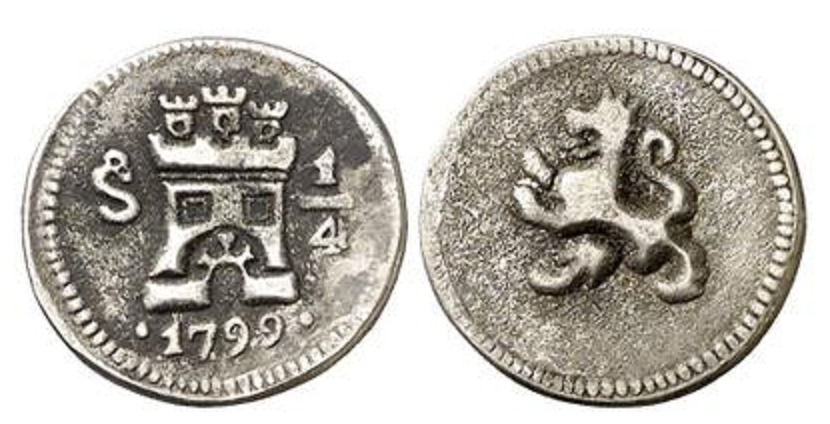
Santiago Mint
I think this is a cast counterfeit.
Fac quod debes, fiat quod fiet
Thank you. I was a little surprised by the auction house appearances, but maybe I shouldn't be, like I said, seems like a relatively high quality counterfeit.
Really cool one, seems cast, but the design is done by hand. Maybe it is die struck but harshly cleaned or damaged? Seems odd to strike from counterfeit dies and then use that as the madre for a casting process.
I think the counterfeiters used a mold with a hand-engraved design of the coin on it. Something like this.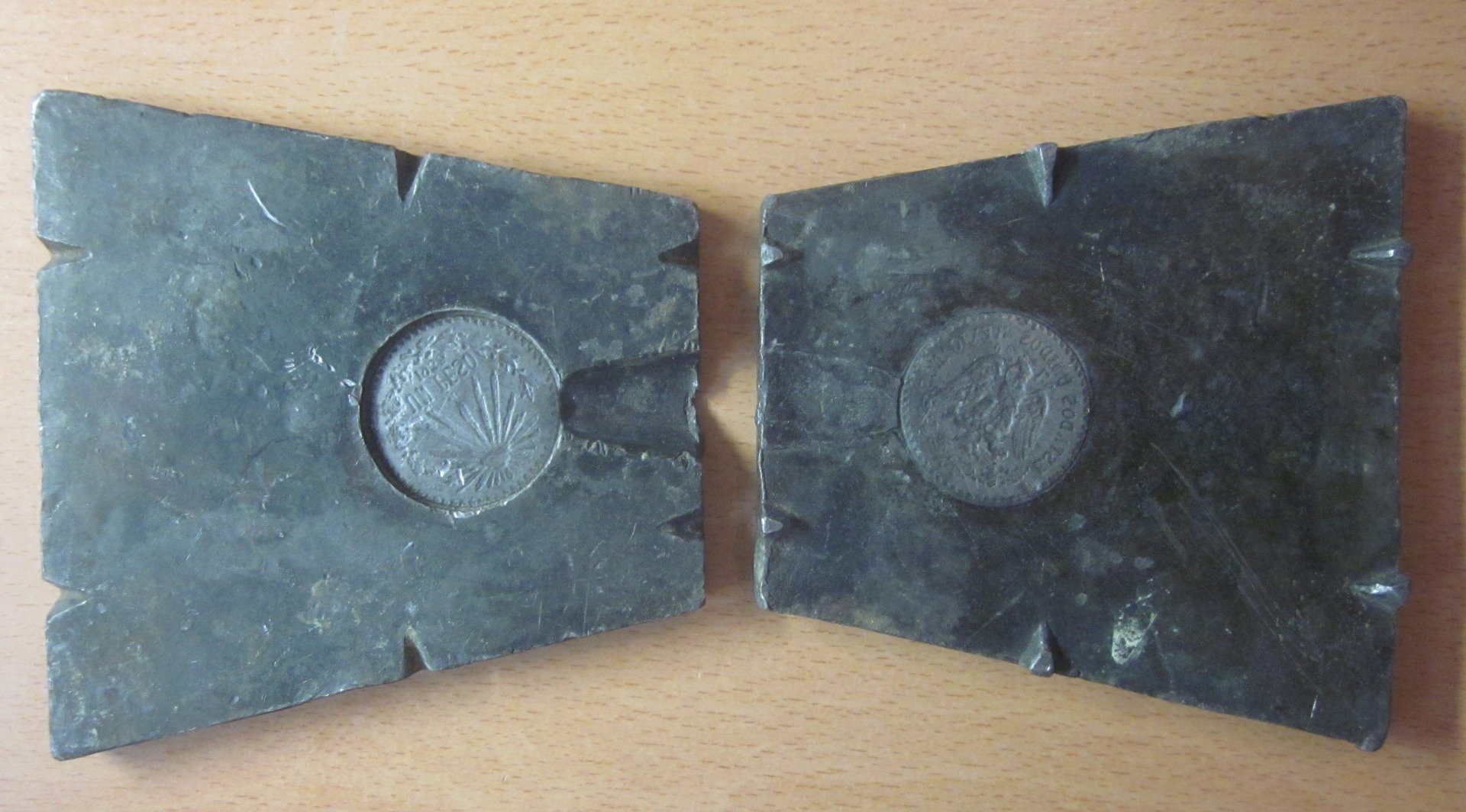
Fac quod debes, fiat quod fiet
@genosse - Anecdotally, I have heard that cast coins of the period were made in sand molds. For instance, Pradeau refers to the products of the Chihuahua mint from 1811 - 1813 as being sand cast. The chief advantage of sand casting is that it reproduces the detail of a genuine coin relatively well, so I don't see the benefit to forgers making hand engraved molds at that time. I would also think that making a metal mold like that would be relatively expensive, and relatively time-consuming to churn out counterfeits. I note that the mold you show is for a one peso coin... which seems like it would have a better cost/benefit ratio than for a 1/4 real.
This is a topic I am really interested in, so would welcome any discussion or sources for further reading. I am working on digging into the topic further, but it's kind of slow going.
@threefifty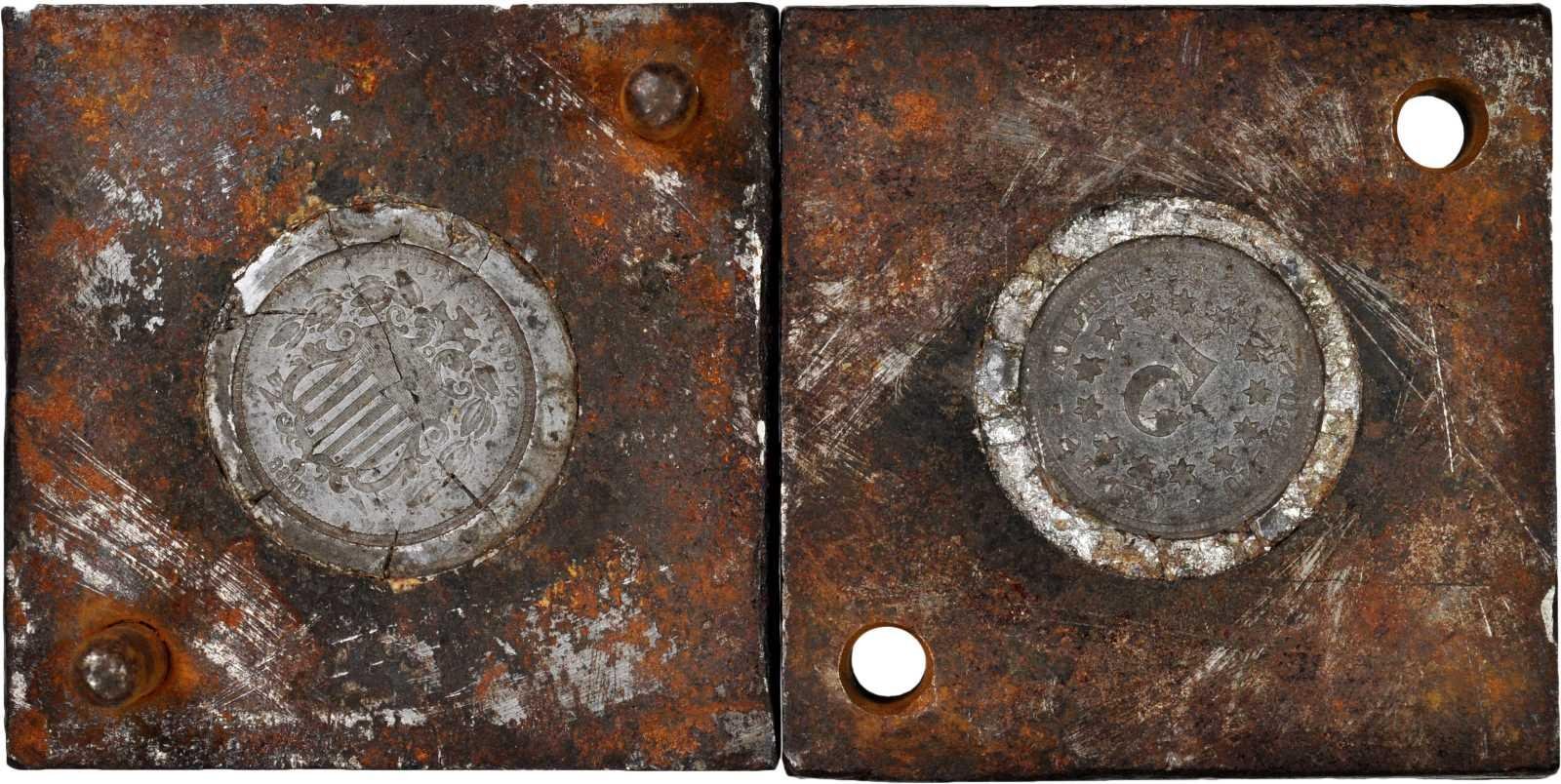
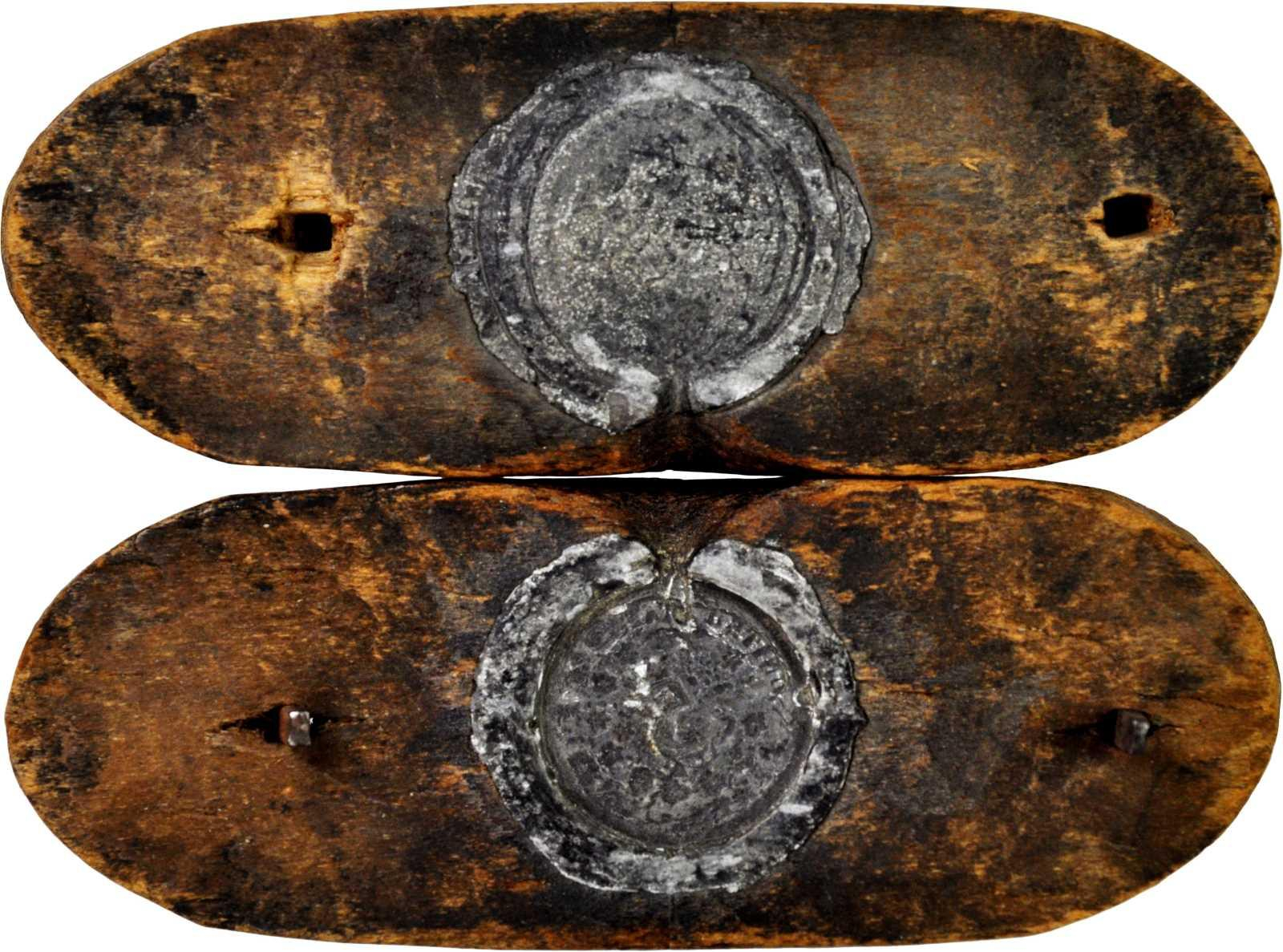
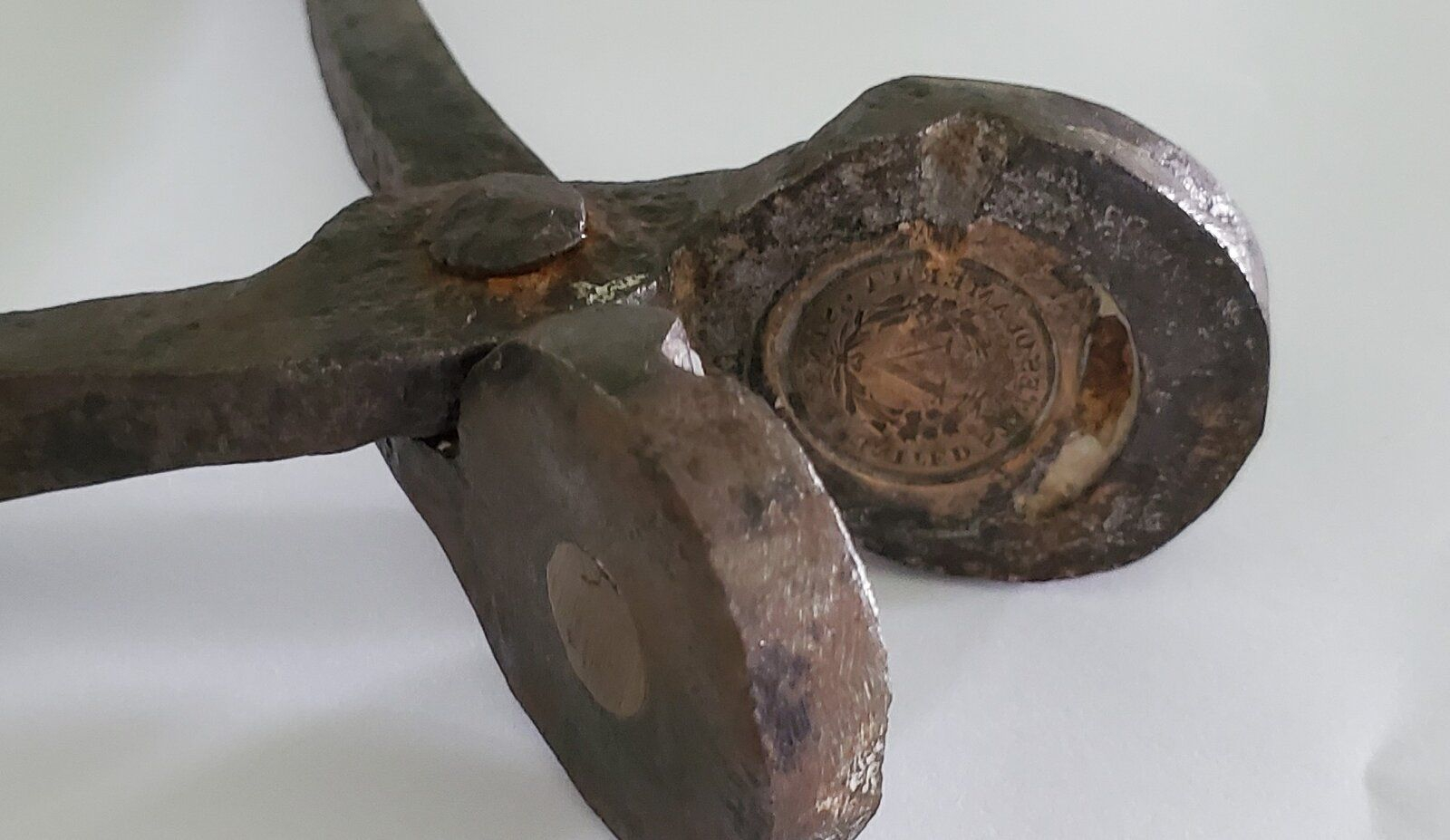
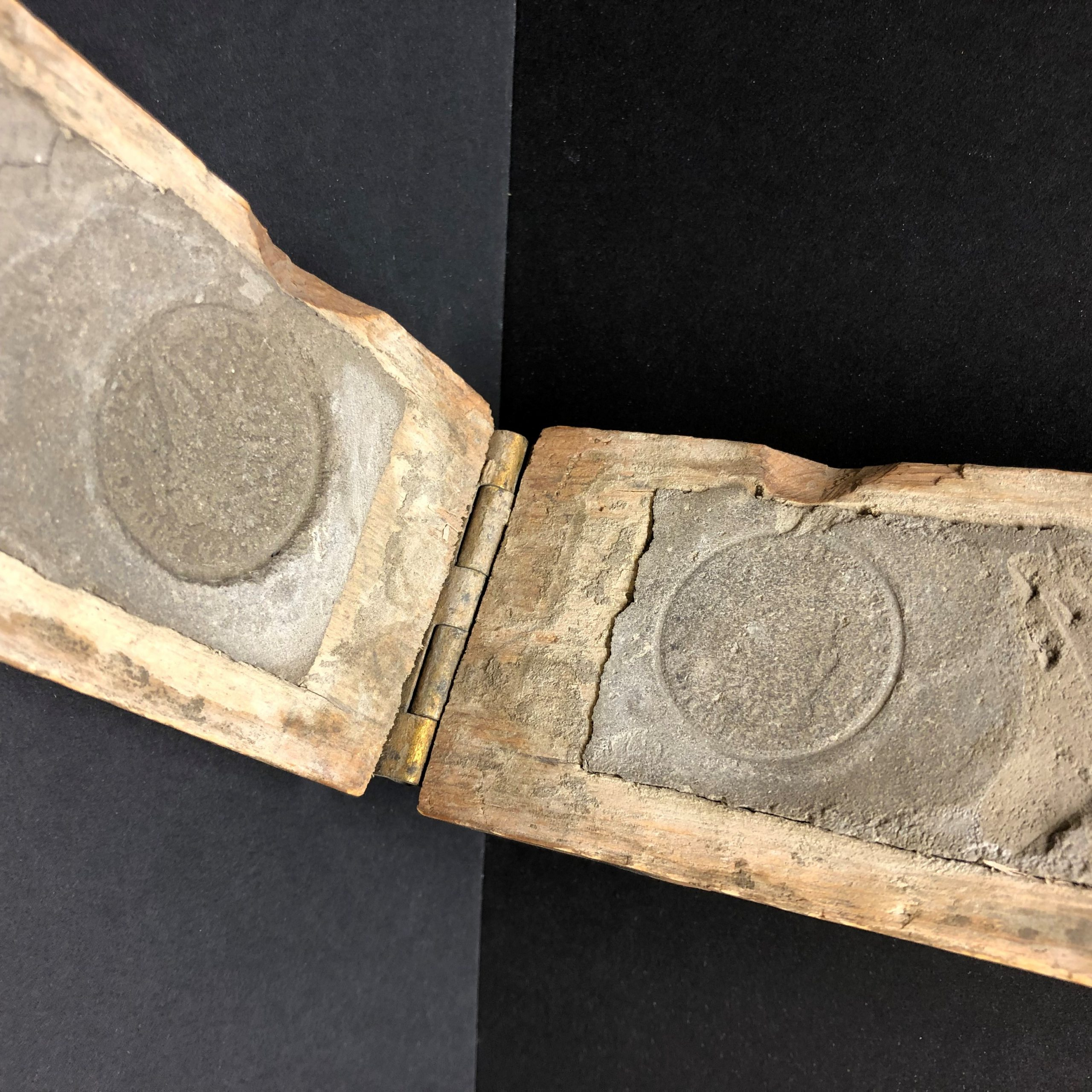
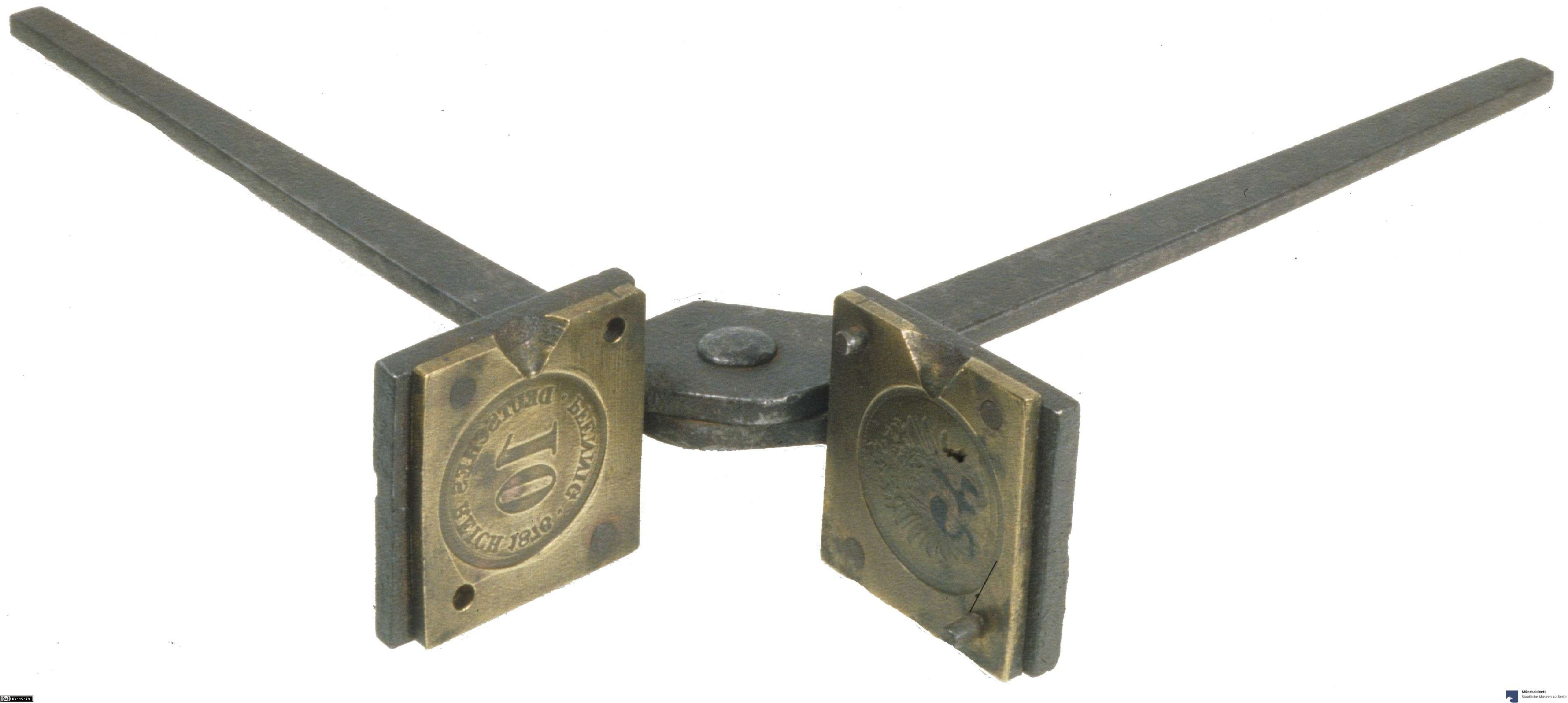
A casting mold made of wet sand (gypsum, cement, etc.) is made by pressing a genuine coin into the surface. Therefore, counterfeits cast in this mold reproduce the design of the genuine coin.
You and I have shown 1/4 real coins whose designs are clearly different from genuine coins. This means that the coin's design on the dies or in the casting mold was also engraved by hand. Engraving a design on the surface of sand is unlikely to work. This can be done on the surface of hardened gypsum, lime, or cement. And counterfeits cast in such molds will probably also have a very distinctive porous surface.
I can't explain why counterfeiters spent so much time counterfeiting small-denomination coins. Perhaps such coins attract less attention, and large quantities can be put into circulation more quickly.
At least in my photo archive, I have many photographs of casting molds for counterfeiting small-denomination coins. And although these molds are clearly made using genuine coins, that doesn't mean there aren't molds with hand-engraved designs.
Fac quod debes, fiat quod fiet
Cool pictures!
About engraving sand molds, I can only go off my knowledge of the Chihuahua issues, where the mintmark and assayers of Mexico City issues were overwritten. But that's not much of a design change.
Come to think of it, counterfeiting a 1/4 is like counterfeiting US 3 cent pieces (which I have heard was intended to replace 1/4 real in circulation in the 1850s). So kind of makes sense.
Like anything regarding counterfeits, seems there are no easily provable answers, but I'll keep reading. Thank you for the discussion.
A very interesting counterfeit half real coin is offered for sale at the Stacks Bowers auction.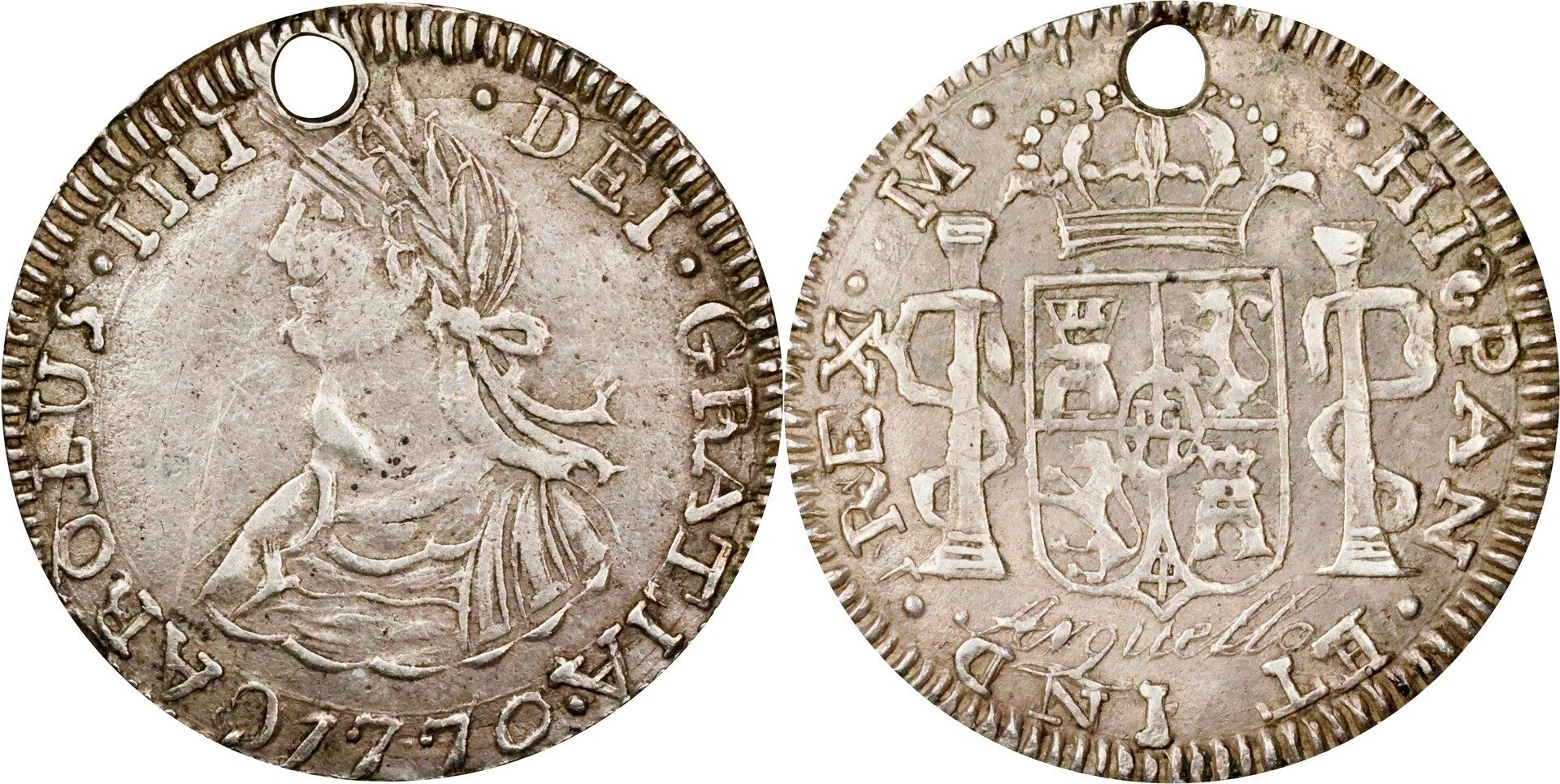
Beneath the coat of arms is the inscription "Anguello." The lot description suggests this is the counterfeiter's name.
Is this a strange desire on the part of the counterfeiter to immortalize his name for posterity?
Perhaps this is not a counterfeit, but something like a token, souvenir, or something similar, crafted by a silversmith ? Then the theory that silversmiths were involved in their production receives some support.
Please note: a perfectly round blank was used for the counterfeit.
Radial markings for the inscription are visible on both sides of the coin.
Fac quod debes, fiat quod fiet
That's an Argentina "button style" issue... 1860s or so??
botonistica.es/catalogo19/pindice.html
Neat styling though
Dang, you nailed it! I know it looks like Anguello, but perhaps is Arguello.